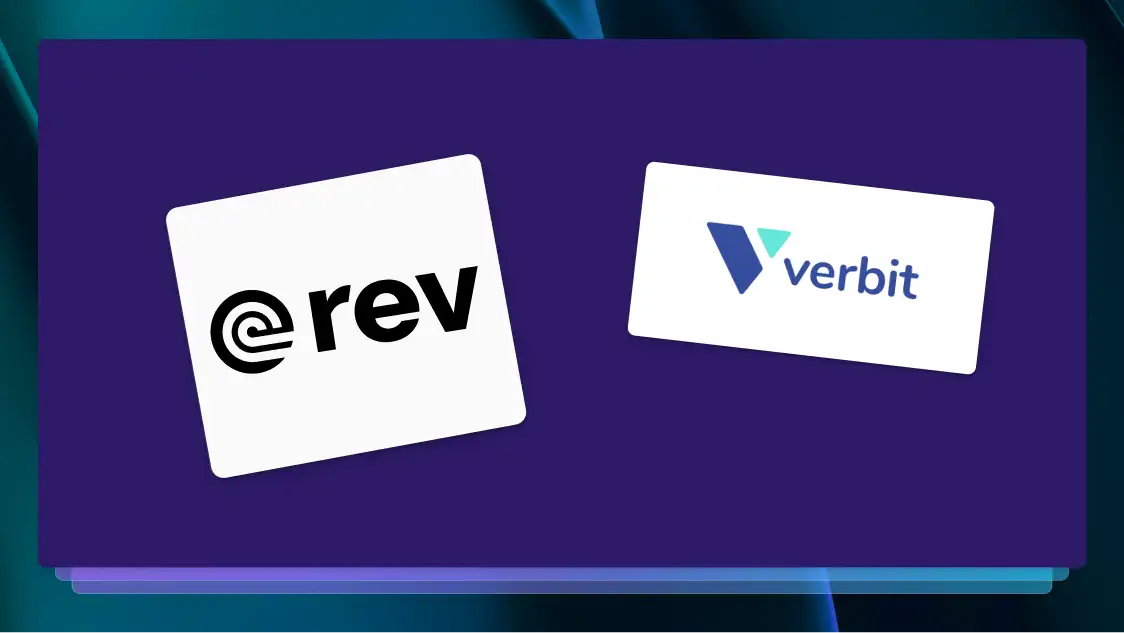What Is a Live Streaming Speech Recognition API & Why Use It?
Learn more about live streaming speech recognition technology and how it can be useful for your business or organization.

Standard speech recognition services are perfect when you need to caption occasional videos or audio recordings. But for some needs, access to the underlying technology that powers these services can take your business further. This is where a speech recognition API is valuable.
A live streaming speech recognition API allows you to hook your applications up to an automatic speech recognition (ASR) engine. The API (Application Programming Interface) acts as an intermediary between the application and a remote server with an ASR. For example, if you build the Rev API into your website, your website can communicate with Rev’s speech-to-text engine via the API. A customer could transcribe their voice with a click.
Setting up an API requires coding knowledge. But the end-user should have a no-rivets experience. The end-user might be a customer accessing the website where the API is embedded or an employee using a company tool.
Common uses of live streaming speech recognition APIs include word processing, mass transcription of call center conversations, and the real-time captioning of live events.
How does a Live Streaming Speech Recognition API work?
A live streaming speech recognition API needs to be founded on a speech engine. In the case of Rev’s API, this engine is an industry-leading speech recognition AI (artificial intelligence). Unlike other leading engines, Rev has developed its tool with a human-generated training set rather than statistical analysis—machine learning with a conscientious human touch.
You can build Rev’s speech recognition API into your apps using a software development kit (SDK). It is possible to do this using various coding languages, including Python, JavaScript, and Go. When you send a transcription request via the Rev API, Rev’s software interprets the spoken word in the audio stream by comparing the fundamentals to our extensive library of words, phrases, accents, and sentences.
- An asynchronous API for pre-recorded audio and video files. It returns a transcription or captions of hour-long files in under a minute.
- A streaming API for real-time captioning of live audio/video, keyword-monitoring, and implementing actions based on specified trigger words.
The asynchronous API uses REST (Representational State Transfer). And the streaming API uses RTMP (Real-Time Messaging Protocol).
We offer output in .json or .txt format. Rev’s API comes with software development kits, full documentation, and expert support.
How Accurate is It?
AI transcription is not yet as accurate as a professional human service, which may achieve 99% accuracy or more. But speech-to-text AI can achieve accuracy of 85% and higher. (On high-quality audio with native English speakers, Rev AI’s results are in the low-mid 90s). Human transcription is still preferable where near-perfect accuracy is essential. But if speed and cost at scale are priorities, the best AI now delivers excellent results.
The big tech companies use statistical analysis to train their models. But Rev’s machine learning is founded on manual training. Rev works around the clock with a team of 50,000 human professionals to transcribe and caption the spoken word. We trained the Rev AI with ten years of human-sourced data. Our developers carefully collected and edited it rather than simply harvesting masses of audio, as in the case of Siri and Alexa. Indeed, ASR is the core of what we do. The result? A live streaming speech recognition API that outperforms tech’s biggest names.

Rev performed Word Error Rate (WER) tests on our own automated transcript service, the Google Cloud speech API, and those of Amazon and Microsoft. We outperformed them all. Not all speech engines can label different speakers in a room, but Rev does that, too.
Another advantage of Rev’s API is that you can boost accuracy by sharing unusual names and terminology before using it.
Why Use a Live Streaming Speech Recognition API?
Live streaming speech recognition is a great asset for individuals and businesses. Developers utilize the power of a purpose-built speech engine by integrating it into their companies’ platforms and services.
Making live videos, conferences, and webinars accessible is ethical. In many cases, it’s a legal requirement. A real-time speech-to-text API delivers instant captioning and transcription to guarantee that everyone is included. Of course, your transcribed speech remains available afterward as a searchable archive.
Rev has trained our API on major English accents from around the world. This simplifies your transcription workflow as you don’t need to organize or pay for extra services.
Use Cases
Many businesses where the spoken word is central to service can benefit from speech-to-voice tech. And for many of these businesses, an AI-powered speech recognition API is the most affordable and efficient choice.
Here are some use cases where a streaming API could be a valuable asset:
- Call center and customer support services
- Facilitate the monitoring of support call quality.
- Refer to transcripts for training purposes or auditing.
- Train an interactive voice response (IVR) system to stand in for agents.
- Apps and access points
- Integrate voice typing capabilities or hands-free voice commands into your software.
- Create a searchable user inquiry history for your virtual assistant to support development.
- Conference and event venues
- Deliver real-time live captioning of events in-venue.
- Improve accessibility for participants attending online.
- Share transcriptions with participants after the event.
- Academia
- Provide timestamped lecture transcriptions to students rather than manually-prepared notes.
- Live caption online lectures; explore translation options for ESL students.
- Content creators
- Automate captioning quickly and at scale.
- Offer transcriptions. This can boost discoverability, accessibility, and usability.
- Medical offices
- Dictate and automatically transcribe electronic health records (EHRs) after visits.
If these use cases sound advantageous to you, you can access the Rev.ai API to get started with real-time captions and transcription. Prices start at $0.035 per audio minute and get lower as volumes increase.
And if you’re not sure how live streaming speech recognition API might work for you – or whether it’s the right speech-to-text option for your business – speak to us, and we’ll help you find the right solution for your needs.















